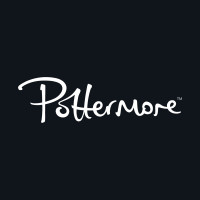
The Tales of Beedle the Bard has, for centuries, been as much a staple of wizarding childhood as Cinderella or Snow White has for tiny Muggles. After all, the Bard’s tales are like the Wizarding World’s equivalent of Aesop’s Fables, and provide valuable lessons for magical children – but there’s a lot us Muggles can learn from them, too.
They’re funny – in a way kids totally get
The first tale – ‘The Wizard and the Hopping Pot’ – leans heavily on just the kind of gross, icky humour that has toddlers falling about. We read of warty little children, smelly cheese, sloppy sour milk and (best of all) a ‘plague of hungry slugs’. Throughout the collection, there are plenty of shudder-worthy images: in ‘The Fountain of Fair Fortune’, a bloated worm drinks one of the heroine’s tears. If that doesn’t raise a merry grimace on their little gap-toothed faces, then you’re not reading it right!
The use of language is exquisite, but never impenetrable
Like Muggle fairy stories, the tales are a glorious repository of elegant, archaic language and poetic turns of phrase. Maybe a sullen ‘warlock’ is expected by ‘his kinsfolk’ to perk up ‘when a maid catches his fancy’, or the ‘charlatan’ who cheated the ‘foolish king’ out of ‘a silver chalice’ needs the help of a local ‘washerwoman’. Words and ideas all too seldom encountered in cartoons or apps.

The text is brief, and illustrated
Beedle the Bard’s tales are concise, and can easily be boxed off at bedtime. They’re also leavened with illustrations, some pretty (the floral spandrels draped across most pages), some worth dwelling on for explanation (the lute and spilled goblet), and some also funny (wait until you get to the bamboozled levitating horse).
There’s a subtle whiff of romance…
…without any of the bluntly hormonal goings-on of the later Potter books. Instead, there are hints of a more chivalric brand of love – one that nods to beauty, but cares more about truthfulness – acknowledging the ephemeral, sometimes foolish, often sadly unpredictable nature of the human heart.
Better yet, contrasted with the tragic drippy heroines found throughout the Muggle fairytale canon, the tales are, for their vintage, refreshingly feminist. Witches, by and large, take their fates into their own hands without waiting for a brave knight or handsome prince to save the day, thank-you-very-much.

Beedle provides timeless moral guidance
Virtue is rewarded and wickedness punished. Power, deception and intimidation will only get characters so far; the real winners prevail through ingenuity, application, kindness and common sense. Helping others is a noble end in itself. Jealousy and vanity, left unchecked, are always toxic. All things must pass, but therein lies the imperative to lead an upstanding life.
The stories gain more meaning as you get older
Each tale is helpfully dissected in a collection of short afterwords by no less a figure than Albus Dumbledore, giving the tales even more resonance when you grow up.
The all-too-relevant lessons about prejudice and intolerance, as seen through the prism of pure-blood wizarding history, are timeless for any age. Even bowdlerisation – the iffy Muggle practice of expunging naughty words or ideas from classic texts to remove unsavoury notions – is touched on in an illuminating reference to literary fusspot Beatrix Bloxam.
Dumbledore even treats us to an intriguing glimpse into the world of wizarding superstition, when discussing the lore which grew up around the Elder Wand in the famous ‘The Tale of the Three Brothers’.

Finally, in a profound climax, the late Hogwarts Headmaster reminds readers of the vulnerability and weakness in the face of temptation, or heartache, or loss we all share.
And that’s true whether you’re a child, an adult, a witch, wizard, Muggle or Chief Warlock of the Wizengamot and Supreme Mugwump of the International Confederation of Wizards.


